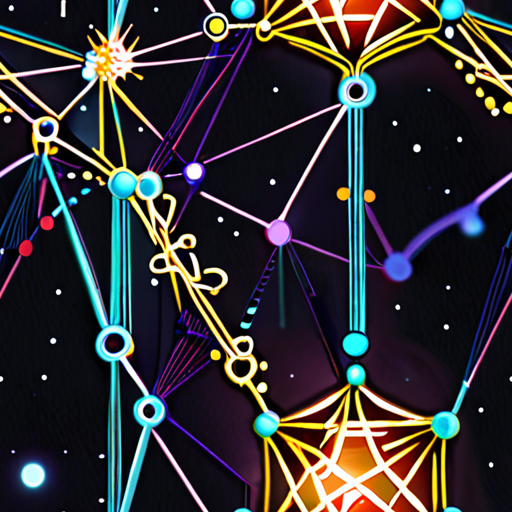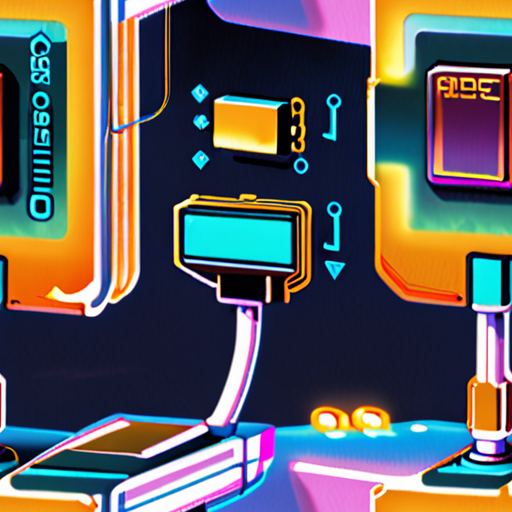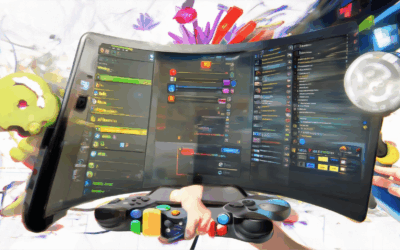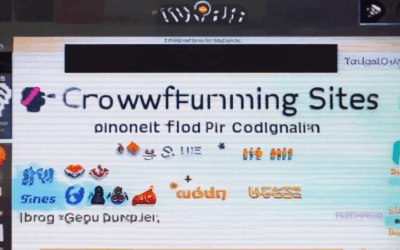In the dynamic world of indie game development, where creativity meets technology, building a robust network is not just beneficial—it’s essential. For indie developers eager to boost their visibility and success, understanding the art of networking for indie devs is key. This article delves into strategies that reveal how connecting with fellow game developers, leveraging social media platforms, and exploring collaborative opportunities can significantly propel an indie game’s journey to prominence. Whether it’s through platforms like Reddit, where developers share invaluable insights and resources, or by participating in industry events, networking can open doors to diverse revenue streams and innovative ideas. Dive into the strategies that empower indie developers to not only market their creations effectively but also envision and develop the AAA-quality experiences they aspire to create.

Indie Developers’ Annual Income
The average annual income for an indie developer varies widely depending on factors such as location, experience, and type of project.
-
Freelance Indie Developers:
According to various reports, freelance indie developers can earn anywhere from $40,000 to over $100,000 per year, depending on their skills, experience, and client base.
-
Full-Time Indie Developers:
Those who work full-time on their own games may earn a steady income, potentially ranging from $60,000 to over $150,000 annually, depending on the success of their projects.
-
Game Development Studios:
Indie game development studios often have a team of developers working together, which can lead to higher overall incomes, potentially exceeding $200,000 per year.
Keep in mind that these figures are estimates and can vary greatly depending on individual circumstances.
Factors Affecting Income:
-
Experience:
More experienced developers tend to earn higher incomes due to their increased skillset and ability to take on more complex projects.
-
Location:
Developers based in major cities or regions with a high cost of living may require higher salaries to maintain a comparable standard of living.
-
Type of Project:
The type of game or project being developed can significantly impact income, with more complex or successful titles often generating higher revenue.
Conclusion:
While there is no one-size-fits-all answer to how much indie developers make per year, understanding the various factors that influence income can help individuals set realistic expectations and plan accordingly.
Can Indie Developers Make AAA Games?
The short answer is yes, but it requires careful planning, significant resources, and a deep understanding of the gaming industry.
- Key Factors to Consider
- Team Size and Expertise: Assembling a team of experienced developers, artists, and designers is crucial for creating high-quality AAA games.
- Budget: Developing a AAA game requires a substantial budget to cover costs such as software development, hardware, and personnel expenses.
- Timeframe: Creating a AAA game takes time, often spanning several years, which means indie developers need to plan ahead and manage their resources effectively.
- Technology and Tools: Choosing the right technology and tools is essential for efficient development and to meet the demands of modern gaming.
While indie developers face unique challenges, many successful examples demonstrate that it’s possible to create AAA games outside of traditional studios.
- Examples of Successful Indie AAA Games
- Cuphead: Developed by Studio MDHR, Cuphead is a side-scrolling action game that showcases exceptional graphics and challenging gameplay.
- Nioh: Team Ninja’s Nioh is an action-adventure game set in feudal Japan, featuring intense combat and a rich storyline.
- Hyper Light Drifter: Heart Machine’s Hyper Light Drifter is a top-down action game with beautiful pixel art and a poignant narrative.
These examples illustrate that indie developers can create high-quality AAA games with the right approach, resources, and expertise.
Conclusion is Not Required
Indie developers can make AAA games, but it demands dedication, hard work, and a willingness to overcome the challenges associated with developing complex games.
By understanding the key factors involved and learning from successful examples, indie developers can increase their chances of success in the competitive world of AAA game development.

Connecting with Game Developers
I’m always looking for ways to expand my professional network and collaborate with fellow game developers.
- Join Online Communities
- Indie Dev Games is a great resource for indie game developers, offering tutorials, reviews, and tips focused on game creation.
- You can also join online communities like GameDev.net, Gamasutra, and Reddit’s r/gamedev, which offer valuable insights and advice from experienced developers.
- Attend Industry Events
- The Game Developers Conference (GDC) is one of the largest and most prestigious events in the gaming industry, featuring keynote speakers, panels, and workshops.
- You can also attend smaller, regional events like the Independent Games Summit or the Game Developers Choice Awards.
- Participate in Game Jams
- Game jams are a great way to meet other developers, learn new skills, and showcase your work.
- You can participate in online game jams like Ludum Dare or Global Game Jam, or attend local events in your area.
- Collaborate on Projects
- You can find collaborators through online communities, social media, or by attending industry events.
- Be sure to communicate clearly and set realistic expectations when working with others.
- Share Your Work and Get Feedback
- You can share your work on platforms like itch.io, GameJolt, or YouTube, and ask for feedback from others.
- Be open to constructive criticism and use it to improve your skills and knowledge.
There are several online platforms and forums dedicated to game development, where you can connect with others who share your interests and passions.
Attending conferences, meetups, and trade shows is a great way to meet other game developers in person and learn about the latest trends and technologies.
Game jams are timed events where developers come together to create games within a short timeframe, often with a specific theme or constraint.
Collaborating with other developers on projects is a great way to build relationships and gain experience working on real-world games.
Sharing your work and getting feedback from others is essential for growth and improvement as a developer.

Choosing the Best Social Media for Indie Game Developers
As an indie game developer, selecting the most effective social media platforms can significantly impact your project’s visibility and success.
-
YouTube
YouTube remains the top choice for indie game developers due to its vast user base and versatility in content creation.
-
TikTok
With its short-form video format, TikTok has become increasingly popular among gamers, making it an excellent platform for showcasing gameplay and behind-the-scenes content.
-
Instagram
As a visually-driven platform, Instagram is ideal for sharing high-quality screenshots, concept art, and developer diaries.
-
Xbox and Facebook
While not as prominent as the previous options, Xbox and Facebook still offer valuable opportunities for promoting your game and engaging with potential fans.
When deciding which social media platforms to utilize, consider your target audience and tailor your content accordingly.
-
Identify Your Target Audience
Understand who your game is catering to and what type of content they would find engaging.
-
Create Relevant Content
Develop content that resonates with your target audience, whether it’s gameplay videos, developer interviews, or behind-the-scenes stories.
-
Consistency is Key
Regularly update your social media channels to maintain a strong online presence and keep your audience engaged.
-
Analyze Performance
Monitor your social media analytics to gauge the effectiveness of your content and adjust your strategy accordingly.
By leveraging the strengths of various social media platforms and tailoring your content to your target audience, you can effectively promote your indie game and connect with potential fans.
Getting Your Indie Game Noticed
As an indie game developer, getting your game noticed can be a daunting task.
- Develop a Strong Online Presence
- Network and Collaborate with Other Developers
- Run Effective Marketing Campaigns
- Engage with Your Community
- Monitor and Analyze Performance
- Promote Your Game through Content Creation
- Participate in Gaming Communities and Events
- Stay Up-to-Date with Industry Trends and Best Practices
Create a professional website that showcases your game’s features, gameplay, and story.
Utilize social media platforms to share updates, behind-the-scenes content, and engage with potential players.
Establish a strong online presence by claiming your game’s page on popular gaming directories like Steam and GOG.
Attend gaming conventions, meetups, and conferences to connect with other developers, publishers, and industry professionals.
Collaborate with fellow developers on projects, share knowledge, and learn from each other’s experiences.
Join online communities, forums, and Discord servers to stay updated on industry news and trends.
Develop a marketing strategy that targets your game’s niche audience and budget.
Utilize email marketing, influencer partnerships, and paid advertising to reach a wider audience.
Optimize your game’s store page with eye-catching visuals, compelling descriptions, and customer reviews.
Build a loyal fan base by responding to feedback, addressing concerns, and sharing development updates.
Host AMAs (Ask Me Anything), live streams, and Q&A sessions to foster a sense of community and connection.
Encourage player-generated content, cosplay, and fan art to showcase the game’s creative potential.
Track your game’s performance using analytics tools, monitoring metrics like sales, engagement, and player retention.
Analyze player feedback, reviews, and ratings to identify areas for improvement.
Adjust your marketing strategy based on performance data to optimize your game’s visibility and appeal.
Produce high-quality content like trailers, dev diaries, and gameplay videos to showcase your game’s features and story.
Partner with content creators, influencers, and media outlets to promote your game through reviews, interviews, and feature articles.
Share developer insights, behind-the-scenes content, and making-of documentaries to humanize your team and game.
Join online communities, forums, and social media groups to participate in discussions, share knowledge, and collaborate with other developers.
Attend gaming conventions, meetups, and conferences to network with industry professionals, showcase your game, and learn from others.
Host or participate in events like tournaments, LAN parties, and charity drives to engage with your community and promote your game.
Follow industry leaders, influencers, and publications to stay informed on the latest trends, technologies, and best practices.
Attend workshops, webinars, and conferences to learn from experts and network with peers.
Participate in online forums, Reddit, and social media groups to discuss industry topics, share knowledge, and ask questions.

Success Rate of Indie Game Developers
The success rate of indie game developers varies greatly depending on several factors such as game genre, target audience, marketing strategy, and overall quality of the game.
- Revenue Threshold: A study suggests that more than 50% of indie games fail to surpass $4,000 in revenue, while around 23% do not exceed $10,000 in lifetime earnings.
- Successful Games: On the other hand, successful games are considered those that exceed $50,000 in revenue, which accounts for only 13% of the top indie games.
- Indie Dev Games Resource Hub: As a resource hub for indie game developers, we offer tutorials, reviews, and tips focused on game creation, empowering game creators by providing insights on development tools, design techniques, marketing strategies, and community stories to enhance their projects.
- Competitor Analysis: While there are several competitors in the market, our primary focus remains on providing valuable content and resources to our audience, ensuring that our brand stands out as a trusted authority in the industry.
Key Statistics:
- More than 50% of indie games fail to surpass $4,000 in revenue.
- Around 23% of indie games do not exceed $10,000 in lifetime earnings.
- Only 13% of the top indie games achieve significant earnings exceeding $50,000.
Conclusion:
While the success rate of indie game developers may seem daunting, it’s essential to remember that every game has its unique strengths and weaknesses. By focusing on creating high-quality games, developing effective marketing strategies, and leveraging resources like ours, indie game developers can increase their chances of success and join the ranks of the top-performing indie games.




0 Comments